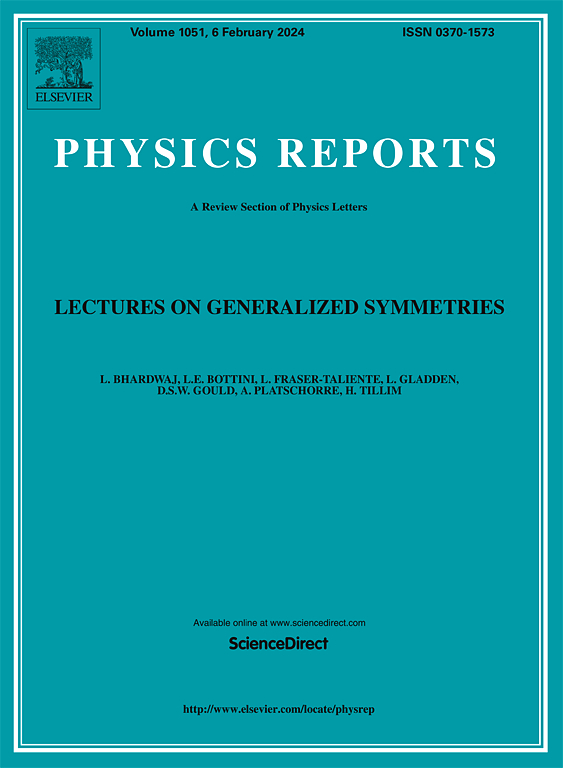Charm and bottom hadrons in hot hadronic matter
IF 29.5
1区 物理与天体物理
Q1 PHYSICS, MULTIDISCIPLINARY
引用次数: 0
Abstract
Heavy quarks, and the hadrons containing them, are excellent probes of the QCD medium formed in high-energy heavy-ion collisions, as they provide essential information on the transport properties of the medium and how quarks color-neutralize into hadrons. Large theoretical and phenomenological efforts have been dedicated thus far to assess the diffusion of charm and bottom quarks in the quark–gluon plasma and their subsequent hadronization into heavy-flavor (HF) hadrons. However, the fireball formed in heavy-ion collisions also features an extended hadronic phase, and therefore any quantitative analysis of experimental observables needs to account for the rescattering of charm and bottom hadrons. This is further reinforced by the presence of a QCD cross-over transition and the notion that the interaction strength is maximal in the vicinity of the pseudo-critical temperature. We review existing approaches for evaluating the interactions of open HF hadrons in a hadronic heat bath and the pertinent results for scattering amplitudes, spectral functions and transport coefficients. While most of the work to date has focused on -mesons, we also discuss excited states as well as HF baryons and the bottom sector. Both the HF hadro-chemistry and bottom observables will play a key role in future experimental measurements. We also conduct a survey of transport calculations in heavy-ion collisions that have included effects of hadronic HF diffusion and assess its impact on various observables.
热强子物质中的粲子和底强子
重夸克和包含它们的强子是高能重离子碰撞中形成的QCD介质的绝佳探针,因为它们提供了有关介质输运特性以及夸克如何颜色中和成强子的基本信息。迄今为止,大量的理论和现象学研究都致力于评估粲夸克和底夸克在夸克-胶子等离子体中的扩散,以及它们随后的强子化成重味(HF)强子。然而,在重离子碰撞中形成的火球也有一个扩展的强子相,因此任何实验观测的定量分析都需要考虑粲子和底强子的重新散射。QCD交叉跃迁的存在以及在伪临界温度附近相互作用强度最大的概念进一步加强了这一点。我们回顾了现有的评估开放HF强子在强子热浴中相互作用的方法,以及散射振幅、谱函数和输运系数的相关结果。虽然迄今为止的大部分工作都集中在d介子上,但我们也讨论了激发态以及HF重子和底部扇区。氢氟酸的硬化学和底部观测值将在未来的实验测量中发挥关键作用。我们还对重离子碰撞中的输运计算进行了调查,其中包括强子HF扩散的影响,并评估了其对各种观测值的影响。
本文章由计算机程序翻译,如有差异,请以英文原文为准。
求助全文
约1分钟内获得全文
求助全文
来源期刊

Physics Reports
物理-物理:综合
CiteScore
56.10
自引率
0.70%
发文量
102
审稿时长
9.1 weeks
期刊介绍:
Physics Reports keeps the active physicist up-to-date on developments in a wide range of topics by publishing timely reviews which are more extensive than just literature surveys but normally less than a full monograph. Each report deals with one specific subject and is generally published in a separate volume. These reviews are specialist in nature but contain enough introductory material to make the main points intelligible to a non-specialist. The reader will not only be able to distinguish important developments and trends in physics but will also find a sufficient number of references to the original literature.
 求助内容:
求助内容: 应助结果提醒方式:
应助结果提醒方式:


